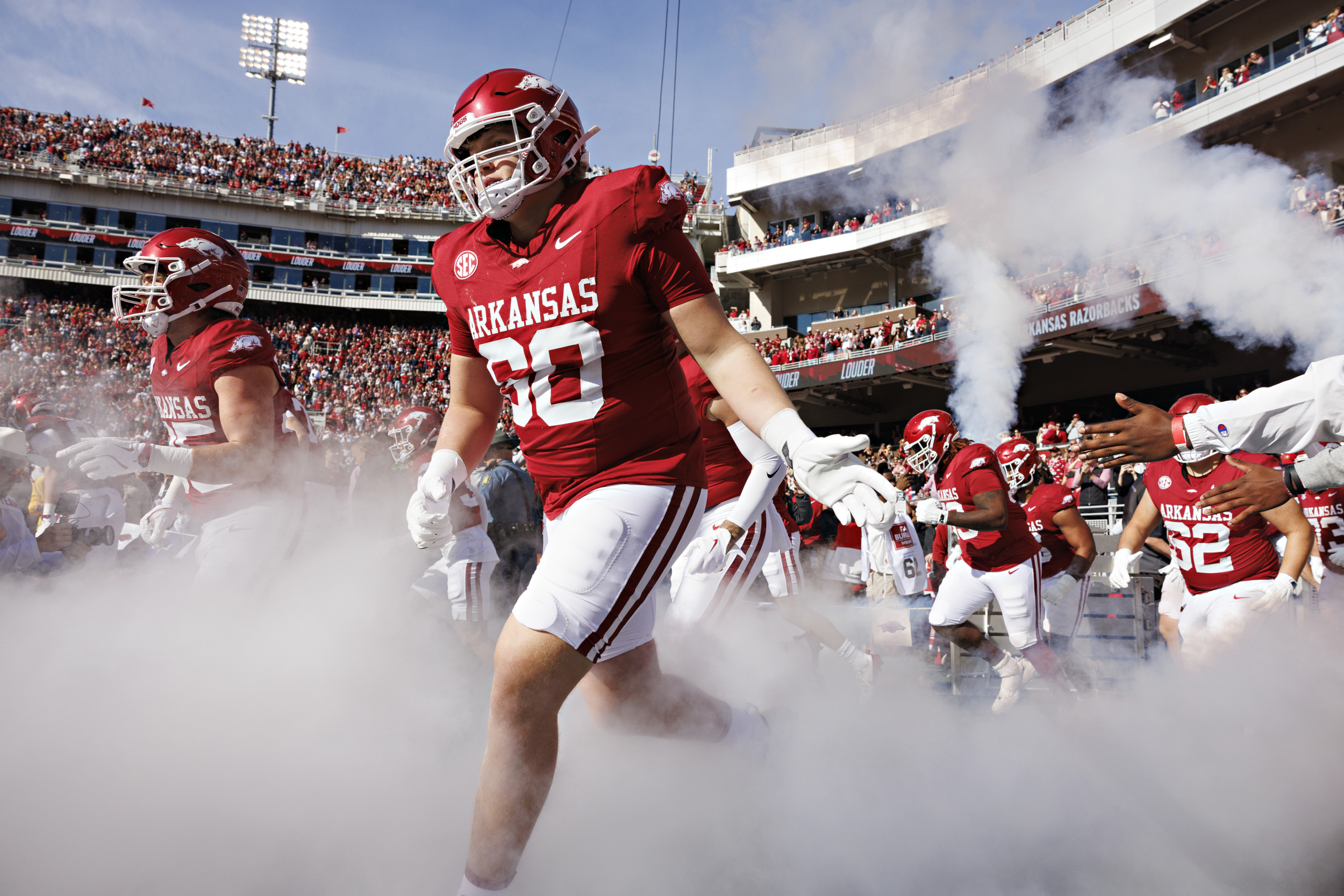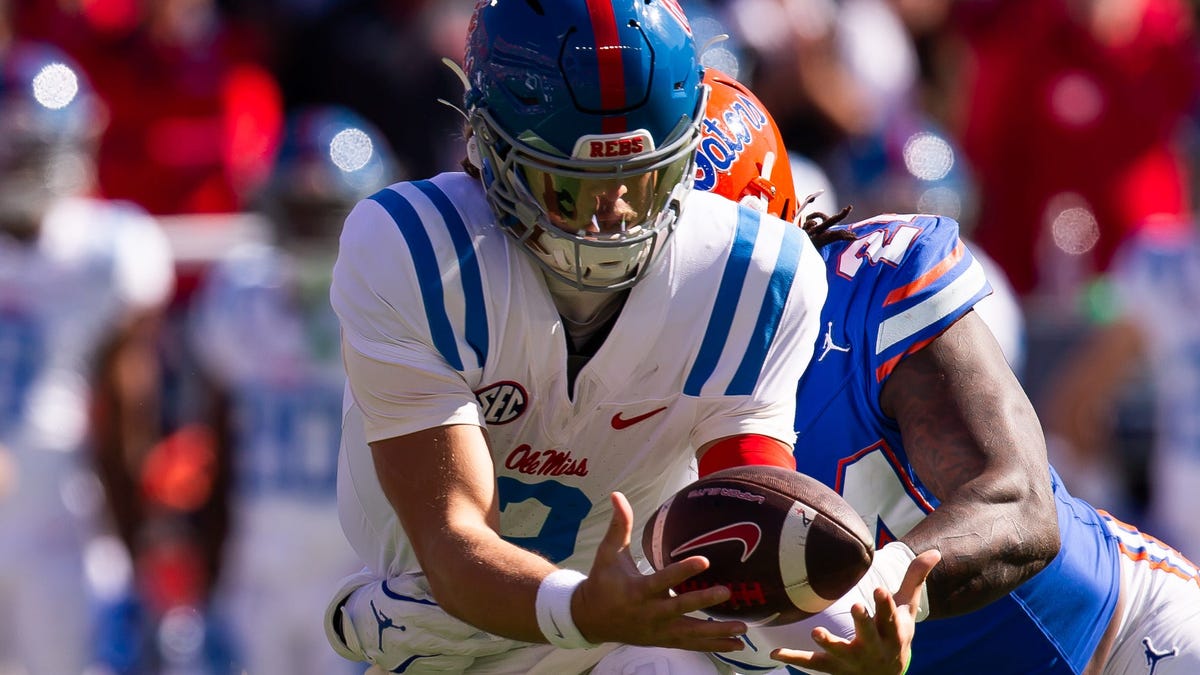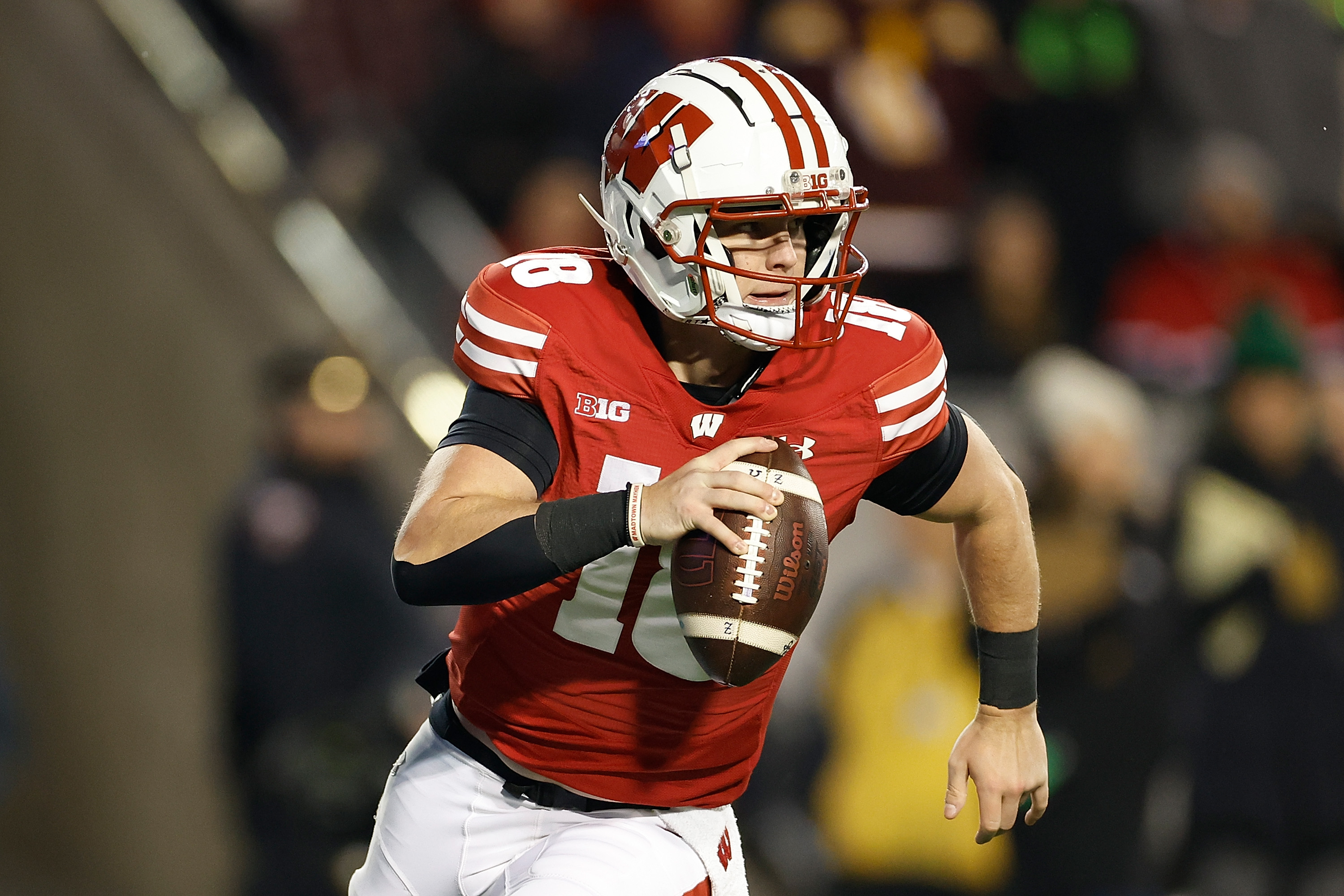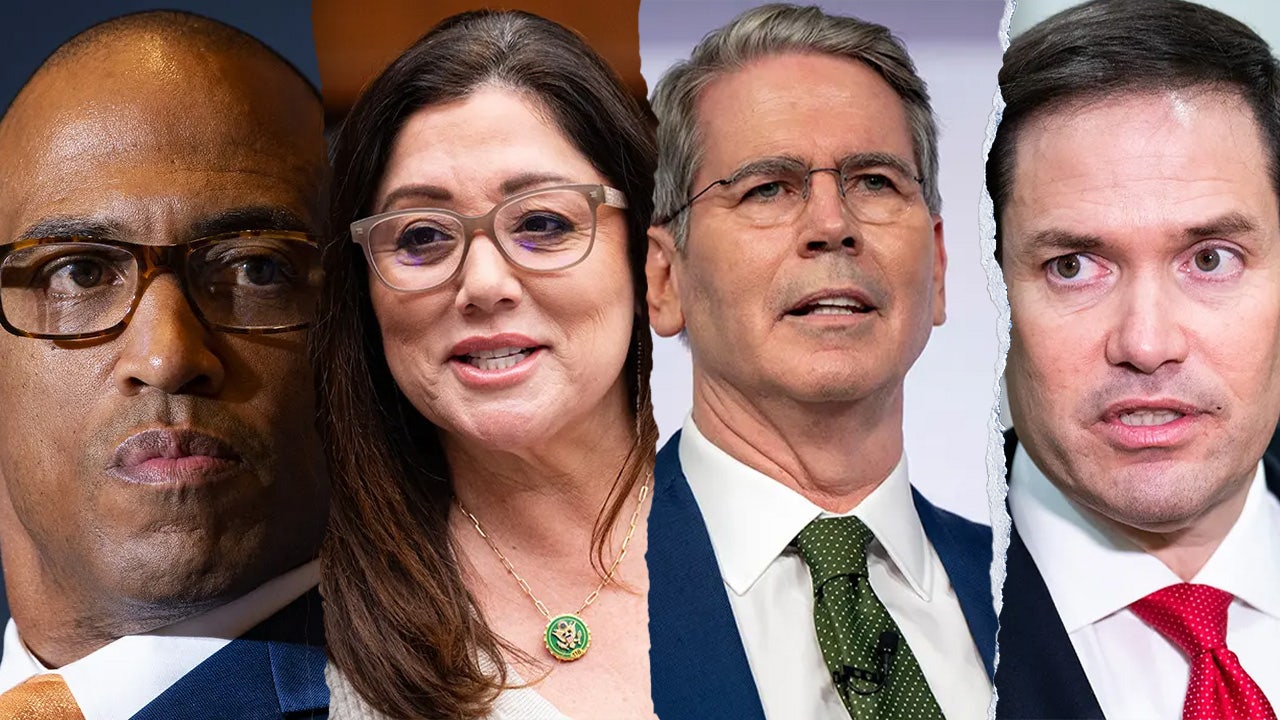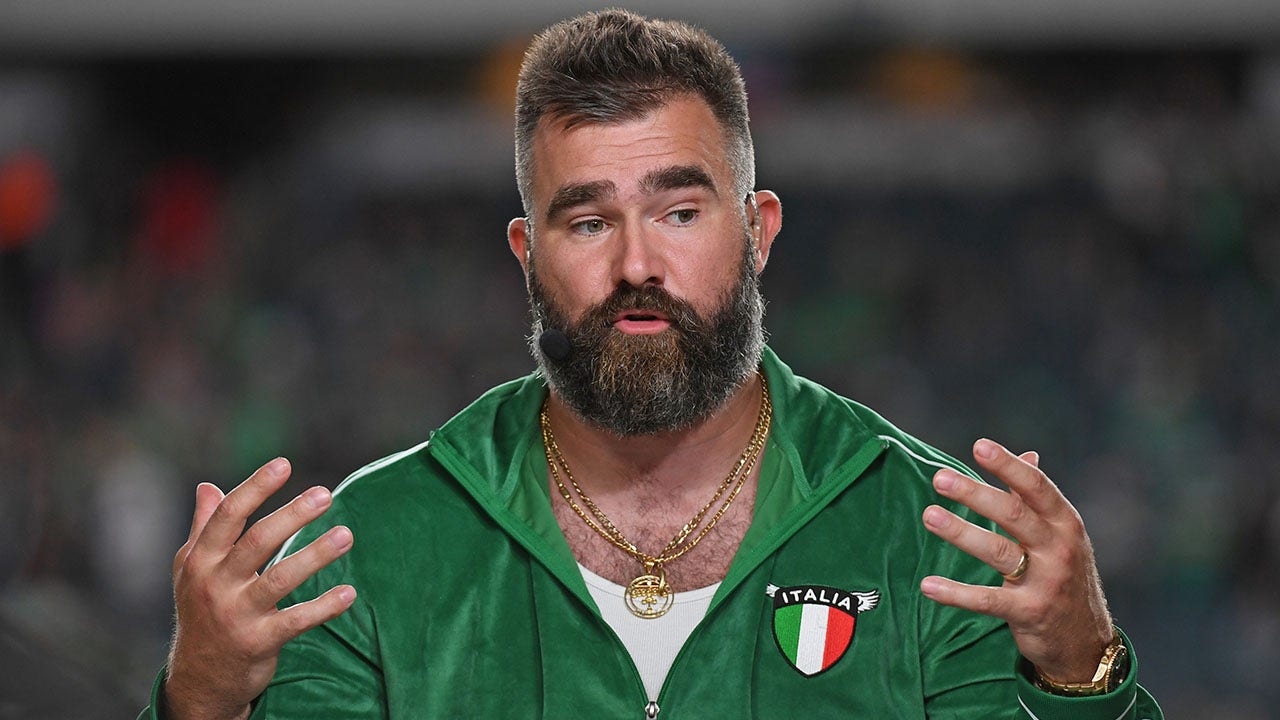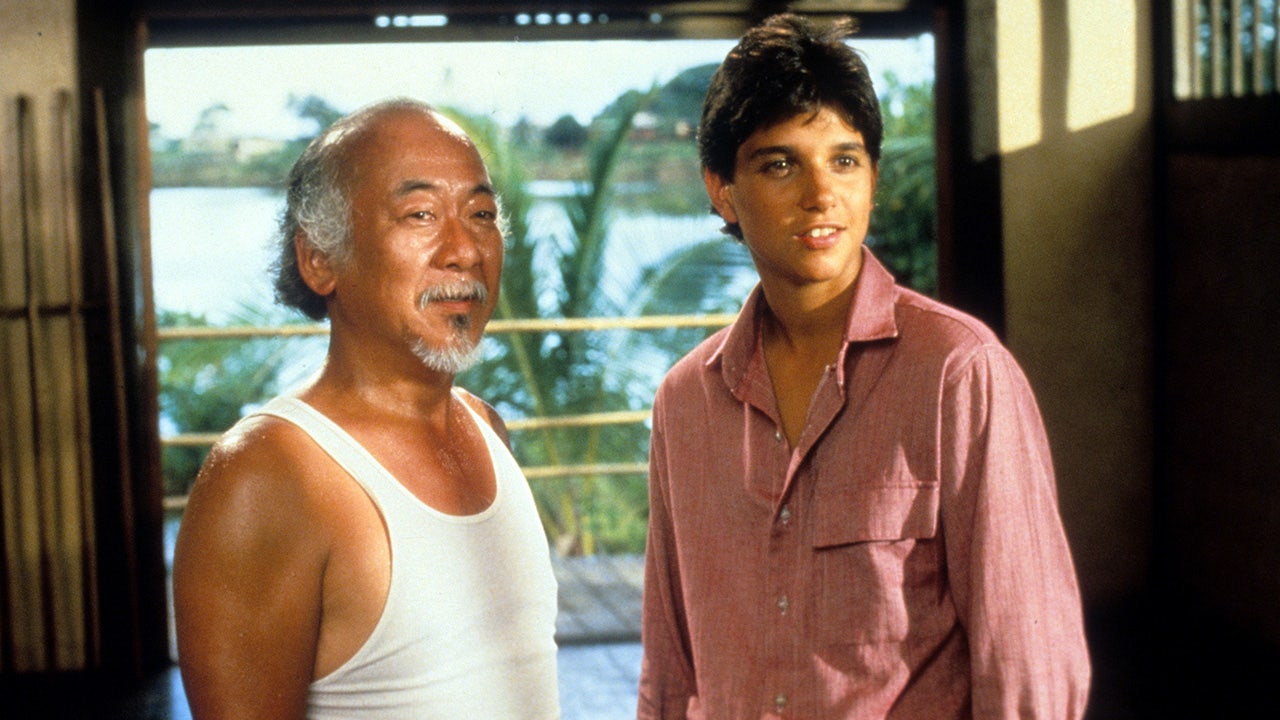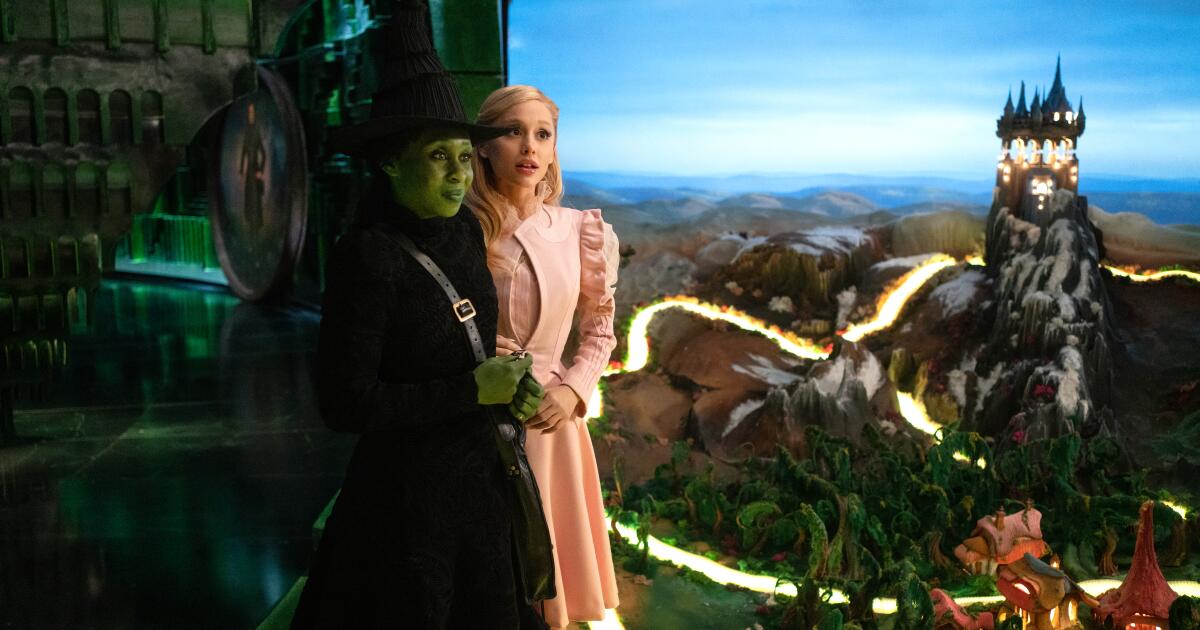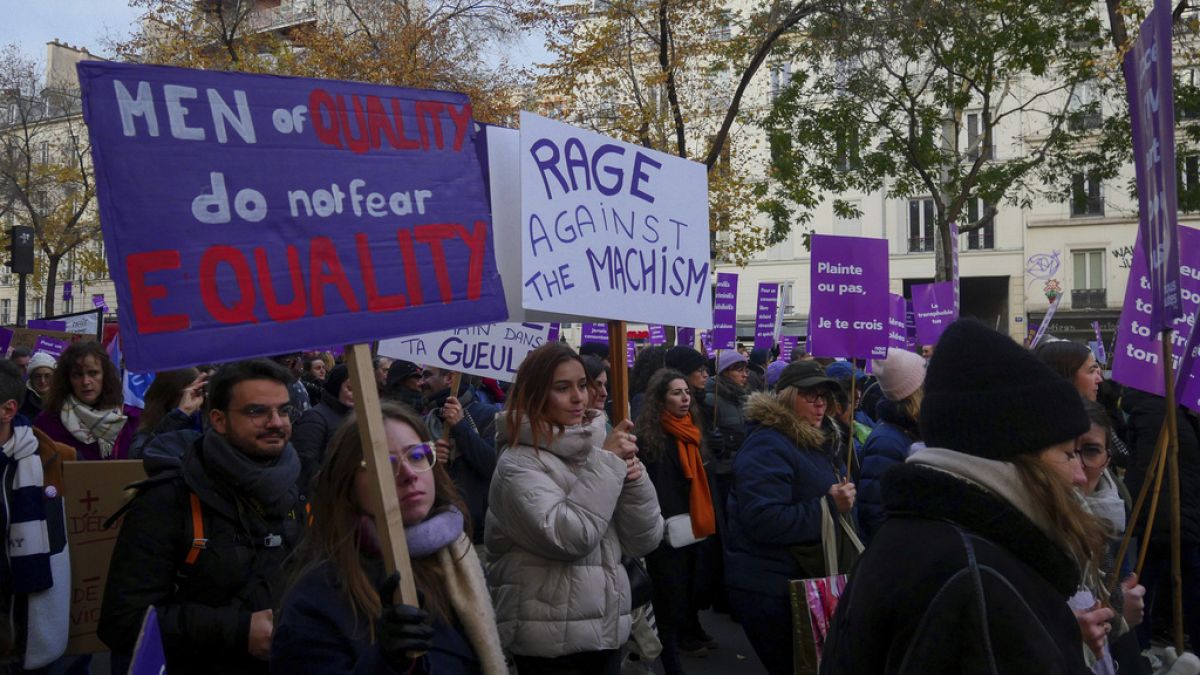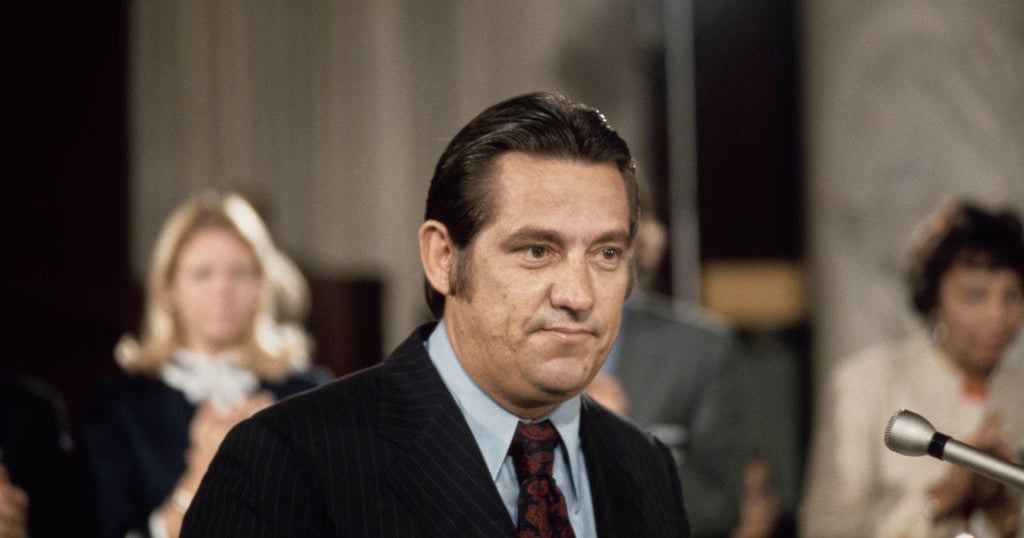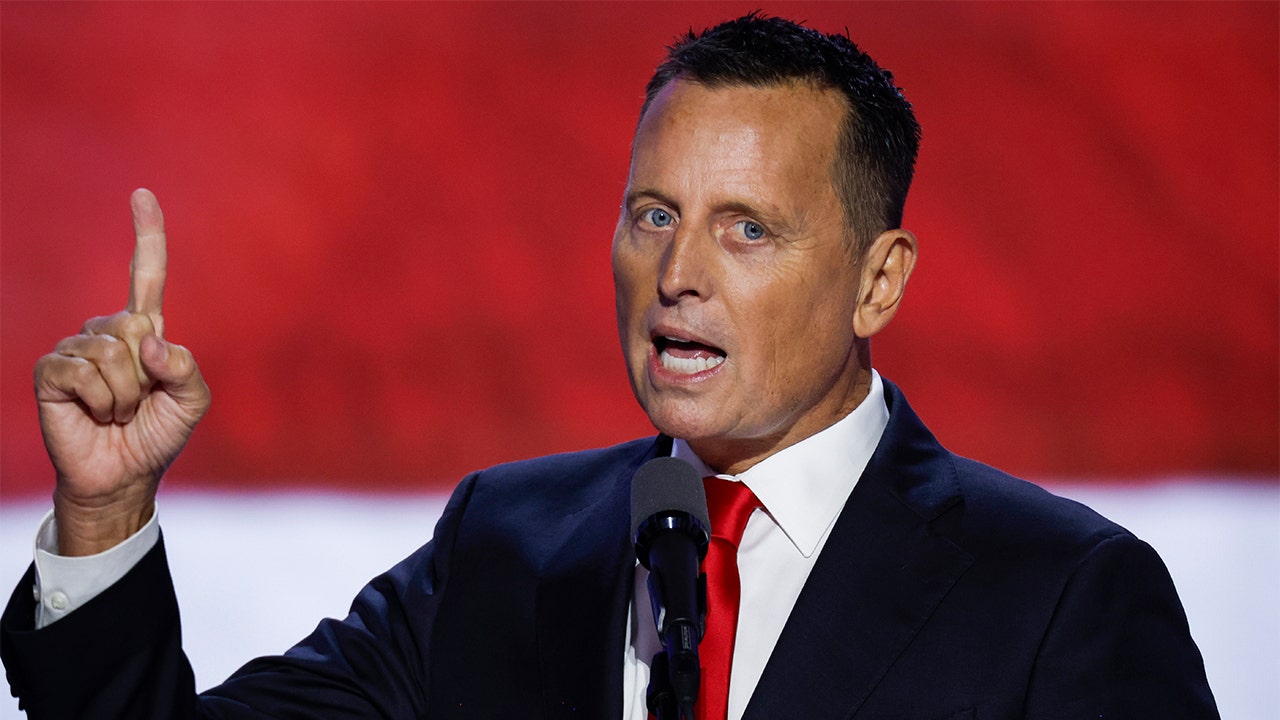Culture
ESPN fires Griffin III, Ponder in cost-cutting moves

ESPN has fired “Sunday NFL Countdown” host Samantha Ponder and analyst Robert Griffin III, sources briefed on the moves told The Athletic on Thursday.
The decisions were made for financial reasons as ESPN nears the conclusion of its fiscal year at the end of September, per a source briefed on the matter. Both Ponder and Griffin made more than seven figures. Each was informed of ESPN’s decision Thursday morning, a source briefed on the decision said. Neither Griffin nor Ponder responded to The Athletic’s requests for comment, but Griffin referenced the move in posts on X.
“Thankful for so many people in my time at ESPN that helped me grow because they are some of the best in the business. … THANK YOU to everyone who has supported my family through my playing days and broadcast career so far,” he wrote.
Ponder was entering the final season of a three-year deal worth more than $3 million, sources briefed on her contract said. She only worked in the prestigious role of “Sunday NFL Countdown” host and was basically off for the rest of the year. ESPN generally reserves these types of schedules for the Joe Bucks, Troy Aikmans and Peyton Mannings of its world.
“NFL Live” host Laura Rutledge and “Get Up” host Mike Greenberg are potential replacements for Ponder. Greenberg is considered the favorite, according to sources briefed on the network’s internal talks.
The buyouts of Ponder and Griffin are the only moves ESPN is making at the moment, but it could choose to shed more salary by the end of September. However, the cuts are not expected to be anywhere near the bloodletting in which around 20 big names were let go last June, including stalwarts like Jeff Van Gundy, Suzy Kolber and Jalen Rose.
Samantha Ponder attends SiriusXM at Super Bowl LVII in February 2023. (Photo: Cindy Ord / Getty Images for SiriusXM)
Griffin, who as recently as last year had been viewed as a rising star at ESPN, had two years remaining on his deal. He was hired three years ago after gaining interest from Fox Sports and ESPN. At the time, sources at both networks raved about what they described as one of the best auditions they have ever seen.
He was considered strongly to be ESPN’s No. 2 college football game analyst with Sean McDonough last season, but the job went to Greg McElroy.
ESPN declined to comment.
Since Griffin’s stock had fallen, it made him a prime candidate to be let go. While his seven-figure per year salary will be honored, his role had diminished to a point where ESPN decided to not keep him on.
The first real sign Griffin was being dropped in the order was when he was removed from “Monday Night Countdown,” where he had been on the prime pregame show for two years. ESPN hired Jason Kelce this offseason to replace Griffin.
Last season, Griffin also served on one of ESPN’s top college game broadcast teams, working with play-by-player Bob Wischusen.
Over the years, Fox Sports has shown interest in Griffin. When it sought to find a successor to Reggie Bush on its “Big Noon Kickoff” pregame show, Griffin was high on its list, but it went with another former Heisman winner, Mark Ingram II.
Griffin is active on social media, chiming in on an array of issues, including when ESPN has had controversies. Ponder does not have the flurry of social media posts like Griffin, but has chimed in at times about transgender athletes and other politically charged issues.
In 2017, Ponder was given the honor of replacing the legendary Chris Berman on “Countdown.”
Berman, perhaps the most prominent on-air person in the network’s history, stepped aside, making way for Ponder. She did not have much NFL experience, having worked her way up the ESPN ranks by being a mainstay on its iconic pregame show, “College GameDay.”
Required reading
(Photo: Peter Joneleit / Getty Images)

Culture
NWSL infrastructure is the ‘hardest problem to solve’. Here’s how things stand around the league

All eyes will be on Kansas City, Missouri this weekend when the Orlando Pride and the Washington Spirit face off in the NWSL championship on Sunday. In a way, it will bring the season full circle with CPKC Stadium hosting an action-packed finale.
The stadium’s opening in March marked a historic moment for the NWSL, raising the standard for a club’s stadium experience. With its 11,500-seat capacity, the Current became the first NWSL club to sell out every home game in the regular season.
Although privately financing a stadium might be an unrealistic goal for some clubs, or even an unnecessary one, what the Current has accomplished with CPKC Stadium makes room for a larger conversation about infrastructure in the NWSL. Last year, league commissioner Jessica Berman described that as “probably the hardest problem to solve long-term, and one of the most important problems for us to solve as soon as possible”.
That being the case, The Athletic has taken stock of some of the biggest infrastructure-related wins and losses of the 2024 season.
Most teams are using shared facilities
Nine NWSL clubs in the 2024 season shared a venue with an MLS club. That will increase to 10 teams next year as a new MLS team comes to San Diego. Four teams share training facilities, too. Some teams also share space with a lower-division men’s team, from MLS Next Pro or USL for example.
The only team not to share its venue was the Kansas City Current, which largely used private financing to build its own stadium and training facilities.
GO DEEPER
KC Current’s stadium opener was an historic leveling-up
While sharing resources has its upsides, there can also be friction between teams. Take the disagreement between DC United and the Spirit over their long-term deal in 2021, forcing the Spirit to train at a local high school while the matter was resolved.
Three years later, the Spirit is now in a very different place, heading to another NWSL championship after winning its first title in 2021. It now has American businesswoman Michele Kang as majority owner, and Audi Field is its full-time home venue after splitting time between multiple stadiums in previous seasons. This year the Spirit sold out three matches, with its semi-final win against NJ/NY Gotham drawing 19,365 fans.

Rodman celebrates during the 2024 NWSL Playoffs semi-final match at a sold-out Audi Field (Amber Searls / Imagn Images)
Kang has not been shy about expressing her goal of Spirit one day having its own facility. This seems especially pressing now, given that USL Super League’s DC Power, partly owned by DC United, also calls Audi Field home.
In other instances, as for Racing Louisville and USL club Louisville City, having a shared facility means also sharing ownership, which makes it easier to make last-minute decisions, like when deciding to offer your venue as an alternate with only a few days’ notice.
Issues of being a tenant, and not an owner
Earlier this month, San Diego Wave FC was forced to move its final home match of the regular season across the U.S. to the aforementioned Louisville at Lynn Family Stadium because of poor playing conditions at its home, Snapdragon Stadium.
“The safety and wellbeing of all players is our top priority, and the current field conditions at Snapdragon Stadium, which are the responsibility of a third party, have not met the standards required for a safe playing environment,” the club said in a statement.
The Wave had a series of planned celebrations, including a fan appreciation night, a ceremony for Emily Van Egmond’s 100th NWSL appearance and a ceremony for Alex Morgan’s retirement. All of which had to be moved following the venue switch. Morgan’s celebration will happen next year. The venue also will host two games in the SheBelieves Cup in February.

Megan Rapinoe sustained an ACL injury during the first half of the 2023 NWSL Championship match at Snapdragon Stadium (Orlando Ramirez / Imagn Images)
Field issues in San Diego are not new, with multiple season-ending injuries for NWSL players happening at Snapdragon last year, including Megan Rapinoe’s injury in the early moments of the 2023 NWSL championship. These issues extended into the 2024 season, with former interim coach Landon Donovan saying that “outside of replacing the whole field” there was little to be done to remedy the issue.
Because the Wave is only a tenant, it has limited say over what San Diego State University does and soon cedes next priority to MLS expansion team San Diego FC.
The MLS team will have priority in scheduling, despite the Wave having a loyal fanbase and averaging 19,575 fans per game. Only one other women’s team in the world averages higher attendance, according to the club: Arsenal Women in the Women’s Super League. The university’s contract with the MLS club, though, specifies there will be an annual meeting at the start of each contract year to discuss topics such as “stadium maintenance and capital improvement plans” and “field of play quality”.
The crowding at Snapdragon has led at least one team, the professional rugby team San Diego Legion, to relocate in the new year. The team announced Tuesday it would move to the 6,000-seat Torero Stadium to make way for more weekend home matches.
Public land and public funds – or private financing?
A similar availability snafu happened in Chicago, when the punk rock festival Riot Fest announced it would be held at SeatGeek Stadium in Bridgeview, Illinois, on the same day as a home game for the Chicago Red Stars. The stadium is publicly owned by the Village of Bridgeview, and the hope was that both events would happen concurrently.
“It is unfair and unfortunate to have our club put in this situation, shining a light on the vast discrepancies in the treatment of women’s professional sports versus men’s professional sports,” Red Stars president Karen Leetzow said at the time.
The problem resolved when Riot Fest announced the festival would be relocating to Chicago proper, bringing an anticlimactic end to the months-long drama. The timing of this dilemma unraveled just after the Red Stars had packed Wrigley Field in a historic game against Bay FC on June 8.

Chicago hosted Bay FC at Wrigley Field in front of a record-breaking crowd. (Daniel Bartel / Imagn Images)
While the Red Stars have been tenants of SeatGeek Stadium since 2016, and are contracted through the 2025 season, club leadership has been outspoken about wanting to find a home closer to Chicago.
“Every week, we’re meeting with influential people here in the city who can help us get this done,” Leetzow said in August. “I have a whole series of talking points I’ve been refining and honing throughout the summer and into the fall as the (state) legislators go back into session.”
The hope is for city officials to commit public funding to a women’s soccer stadium like they did to renovate Soldier Field, where MLS side Chicago Fire FC currently competes. That might be a tall ask, though, as the Chicago Bears and White Sox are also bidding for public funding for stadium projects.
The Chicago Fire said last month they are considering building a privately financed, soccer-specific stadium in the city, and had already toured three sites for the project. The MLS team left SeatGeek Stadium, which is 30 minutes outside the city, by paying $60.5 million to get the Fire out of its lease with the venue early in 2019 after Joe Mansueto acquired a controlling stake in the team.
What about training facilities?
Investing in better infrastructure also means investing in training facilities that will help develop and prepare players.
Last year, the Utah Royals unveiled multi-million-dollar expansion and remodelling plans for an NWSL-specific training site at their Zions Bank Real Academy, a 42-acre campus with several grass and indoor fields that houses the franchise’s clubs, including Real Salt Lake in MLS. The Pride and Houston Dash have similar, dedicated spaces with their MLS counterparts.
NWSL expansion club Bay FC announced in September plans to build a training facility in San Francisco’s Treasure Island neighborhood, slated to open in 2027.
“Having a permanent dedicated space that is built specifically for our players and football operations staff will allow us to continue to attract the best national and international talent and continue our Club’s mission of being a catalyst for innovation and change for our athletes and the community,” Bay FC chief executive Brady Stewart said at the time.
The news drew criticism, though, for the decision to develop an area with a history of hazardous waste.

GO DEEPER
After hazardous waste history, Bay FC’s new training site is ‘available for re-use by the public’
More recently, Angel City Football Club unveiled plans to relocate to a nine-acre site on the campus of California Lutheran University, where they plan to upgrade and remodel a 50,000-square-foot training center. The center was previously home of the Los Angeles Rams and will undergo a multimillion-dollar remodel entirely financed by the club, serving as the team’s home for up to four years.
“The size of this performance center is incredibly important, because not only can we provide the resources and staffing and tools that they need today, but we have enough room to grow and evolve,” Julie Uhrman, president and co-founder of Angel City told The Athletic. “So, if we extend beyond from a first team to a second team to Academy, we have the ability to grow.”
The new facility will be exclusively for Angel City and feature custom lockers for players, coaches and staff. Other custom features include a dedicated locker room for players under 18, a children’s playroom to support players and staff, an onsite studio for content creation, a custom boot wall and a private outdoor relaxation lounge.
“Our commitment is that we are going to build a permanent Performance Center for our players, and we’ve actively been working on that since 2020,” Uhrman said. “Wanting something that’s 10-plus acres is challenging and takes time, and while we’re doing that, we wanted to build the best temporary training facility that we could.”
That search for a permanent home remains a “work in progress”, she added. So far, the club has “identified a couple of locations that we’re really excited about.”
Where do things stand for expansion clubs?
The NWSL is growing, with plans to announce a 16th team before the end of the year. The latest expansion club is expected to begin playing in 2026 alongside Boston. While the league isn’t hinting at which direction it will go, it’s safe to assume that having a concrete plan for a team’s facilities and infrastructure could be a deciding factor.
The ownership group in Boston proposed renovating George R. White Stadium in Franklin Park for the team’s home venue, where BOS Nation FC will play. This would be secured through equity and involve a public-private partnership with Boston Public Schools, which would retain ownership of the stadium for its own use.
As for a potential 16th expansion team, one ownership group in Cleveland recently announced the joint purchase of 13.6 acres of state land to build a $150 million, 12,500-seat stadium on what is currently undeveloped land in the city’s downtown. Cleveland Soccer Group (CSG) plans to pursue a public-private partnership, similar to Boston’s thinking.

GO DEEPER
NWSL expansion: Where things stand as the league looks to add a 16th team
“I think it’s really important because most stadiums in this country have had some public financing element to them,” Murphy said. “If you look back in the state of Ohio even, maybe over the past 30 years, there’s been about $2 billion spent in this state across Cleveland, Columbus, Cincinnati, Dayton, Toledo, (and) other cities on men’s professional (sports), and over the same periods it’s been $0 for women.”
Big step forward for soccer in The Land! ⚽️
The Cleveland Metroparks just approved a 13.6-acre land deal for a proposed stadium, part of Cleveland Soccer Group’s efforts to secure an NWSL expansion team.
Team bid results expected later this year! pic.twitter.com/h5ukBVHtQI
— I’m From Cleveland (@ImFromCle) September 19, 2024
Cleveland Metroparks purchased the roughly $4.2 million state-owned property, where the stadium will sit, from the Ohio Department of Transportation. CSG will fund the purchase, with the stadium remaining publicly owned. The purchase of this property, though, is contingent on CSG being awarded the NWSL expansion bid.
Some other potential expansion groups, such as a campaign that launched in Nashville last month, have not shared specific details on their own facilities plans. The local MLS club, Nashville SC, has however expressed interest in potentially sharing their stadium, Geodis Park.
(Top photo: Jamie Squire / Getty Images)
Culture
The Steelers’ offense has two quarterbacks … and a slew of unanswered questions

CLEVELAND — As the flakes tumbled from the night sky, turning Huntington Bank Field into a snow globe, Pittsburgh Steelers quarterback Russell Wilson dropped back and let it fly.
The pass, thrown with anticipation, found receiver Calvin Austin III on time and on target in the end zone for the go-ahead, 23-yard touchdown. After failing to score a touchdown for more than seven consecutive quarters dating to Week 10 against the Washington Commanders, Pittsburgh had scored two in less than two minutes to take a one-point lead over the Cleveland Browns with 6:15 remaining.
.@DangeRussWilson ➡️ @CalvinAustinIII for six!!!!
📲 Stream on NFL+: https://t.co/COxKRnr6Mc pic.twitter.com/ucLP4kE2cM
— Pittsburgh Steelers (@steelers) November 22, 2024
It was a miraculous comeback. Until it wasn’t.
“The game is never won until you get on the bus,” Austin said after the game. “So it was definitely an emotional moment (after the touchdown). We were all hype and stuff. But we knew we had an inspired team that was about to get the ball back.”
As it turned out, the Browns got the ball back not once, but twice.
The Steelers’ defense did its job the first time, forcing backup quarterback Jameis Winston into an errant pass that cornerback Donte Jackson intercepted with 4:22 to go. But after Pittsburgh went three-and-out — with Justin Fields in for Wilson at quarterback on second and third down — and Corliss Waitman shanked a punt for the first time as a Steeler, the defense couldn’t get off the field again.
Cleveland got the ball back with 3:22 remaining and drove 45 yards in nine plays. The Browns capped the sequence with a 2-yard Nick Chubb touchdown with 57 seconds remaining, then batted down Wilson’s Hail Mary as time expired to stun the Steelers, 24-19.
GO DEEPER
Browns stun Steelers 24-19 in snow as Chubb scores late TD: Takeaways
A team that made a statement by beating the Baltimore Ravens just four days earlier dropped to 8-3, leaving the door open in the competitive AFC North.
“Missed opportunities,” defensive co-captain Cameron Hayward said. “We have to eat it. They made more plays at the end. Some of that stuff we can have some head-scratching about what was on display. Just take it, move on. I know everybody is pretty pissed off about the loss.”
The weighty moments at the end of the game loom large: coach Mike Tomlin’s decision to accept an illegal touching penalty that gave the Browns a second crack at third down on the final drive, then spending a timeout that would be needed later; the coverage on the ensuing third-and-6 conversion; the decision to tackle Chubb on the 2-yard line with more than 90 seconds remaining instead of letting him score to preserve time and get the ball back.
But the reality is this game was lost much earlier, on the other side of the ball.
“We beat ourselves with a lot of mistakes,” Austin said. “That takes all 11 looking in the mirror and just continuing to push details. They’re a good team. Got to give them credit. But at the end of the day, we just got to perform better.”
Two weeks ago, when Wilson erased a 10-point, second-half deficit against the Commanders, it appeared the offense had finally figured it out after years of instability and inconsistency. At the time, the veteran signal caller had led the Steelers to 31.7 points and 382 total yards per game through three starts. If the offense continued along the same trajectory, it was reasonable to consider the Steelers legitimate Super Bowl contenders that could stand toe-to-toe with Patrick Mahomes or Josh Allen.
But it hasn’t continued.
If those first three games showed the explosive upside of Wilson’s moonball, his veteran presence and his ability to make checks at the line of scrimmage, the past two have revealed many of the Steelers’ offensive warts.
It’s certainly not all on Wilson. However, sacks are becoming problematic, putting the offense behind the chains. This was an obvious area of concern the minute the Steelers signed Wilson, considering he led the NFL in sacks taken in two of the previous five seasons. Initially, when he took over for Fields in Week 7, the Steelers did well enough to protect Wilson that it wasn’t a major red flag.
However, in the first half alone on Thursday, Wilson was sacked four times, as the Browns kept the Steelers’ offensive line off balance with stunts and games up front. Three of those sacks came from Myles Garrett, including a strip-sack that set the Browns up on a short field.
Myles strips the ball and we recover it 🙌😤 #PITvsCLE | @NFLonPrime pic.twitter.com/36WalR8R8h
— Cleveland Browns (@Browns) November 22, 2024
Even beyond the negative plays, Pittsburgh’s offense has become too boom or bust. Yes, once again, Wilson’s deep shot was a catalyst. He connected with Austin on a 46-yard bomb up the seam, hit Van Jefferson on a 35-yard gain and found George Pickens for 31 yards. Those big plays helped bolster what was a solid stat line from Wilson, as he completed 21 of 28 passes for 270 yards and a touchdown with no interceptions for a 116.7 passer rating.
The problem is, when the Steelers aren’t producing touchdowns on these deep shots, they’re having a hard time finishing drives. The issues emerged on the opening drive. On third down, Wilson took an 8-yard sack on third-and-2, turning a potential 50-yard field goal attempt into a 58-yarder that the reliable Chris Boswell missed.
The Steelers, who rank 26th in success rate (37.2 percent, per TruMedia) since Wilson took over, tried to use every resource available to keep the offense going. However, another first-half drive was halted on the 40-yard line. This time, they deployed Fields on a fourth-and-2 QB keeper, failing and turning the ball over on downs. The offense also fizzled at the 30 (made field goal), its own 46 (failed fourth-and-1 run by Jaylen Warren) and the Cleveland 9-yard line (made field goal).
“We had some really good, explosive plays down the field, throwing the ball with Van (Jefferson) — he made some great catches — and Calvin (Austin),” Wilson said. “And then we got stalled for whatever reasons. We’ve got to watch the film and see what that was. … We needed one or two more plays.”
Complicating matters is the unique quarterback dynamic. After utilizing the Fields package for three plays on Sunday against the Ravens, the Steelers featured their mobile QB on seven snaps (plus an eighth that didn’t happen because of a false start) on Thursday.
The results were mixed. After coming up short on fourth down early in the game, Fields provided a second-half spark when he kept the ball on a zone read and raced 30 yards along the right sideline. That played helped jump-start the offense, and later in the same drive, the threat of Fields keeping the ball on the zone read helped Warren burst into the end zone to snap the Steelers’ touchdown-less skid and kindle the rally.
Jaylen Warren in for the TD! The @Steelers answer right back.#PITvsCLE on Prime Video
Also streaming on #NFLPlus pic.twitter.com/aDPce0i8CM— NFL (@NFL) November 22, 2024
The Steelers also put the ball in Fields’ hands in a four-minute situation with the lead. It was a reasonable time to play the running quarterback, with the Steelers trying to burn the clock. However, on third-and-4, his deep shot for Pickens sailed incomplete, stopping the clock and giving the Browns plenty of time to score the go-ahead touchdown.
Asked if he would have liked to be in the game in that critical moment, Wilson was somewhat transparent.
“Listen, I always want to be in there,” he said. “That’s just the competitor in me. But at the same time, we have great trust in Justin, our team, our coaches and everything we’re doing.”
It’s also not the easiest challenge for Fields. He said after the game that he felt “kind of stiff” on his 30-yard run after standing on the sideline for the entirety of the second and third quarters, adding he felt he could have scored on the play. Asked if it’s difficult to enter the game mid-stream and virtually without warning, Fields admitted it is.
“But at the end of the day, that’s what my job is,” he said. “So you can’t complain. Anytime I get a chance and an opportunity to go on the field and help my team, I’m happy to do it.”
Sitting behind a keyboard and watching the game from the press box, it’s honestly hard to say what the right balance should be. Fields has often been the Steelers’ best offensive weapon, and his mobility might be able to help them rectify their red zone woes. Using both quarterbacks allows the Steelers to adjust on the fly if the offense needs a jolt or if the opposing pass rush is becoming too big of a factor. On the other hand, it does seem that, at times, rotating quarterbacks can disrupt the passers’ rhythm and timing.
Still, it’s important to remember that the Steelers got to 8-2 thanks to the contributions of both players. If they’re going to prove that this two-game stretch of offensive woes was a blip on the radar, and that this offense can in fact provide an edge in the postseason, they’re probably going to need to continue to use both.
Finding that right balance and rediscovering a way to finish drives will help determine how far this offense — and the team as a whole — goes.
“We’ve got a lot of football left,” Wilson said. “We’ve got a lot of opportunities to respond in the highest way, highest level. I think that everything that we want is still in front of us.”
(Photo of Russell Wilson: Kevin Sabitus / Getty Images)

Free, daily NFL updates direct to your inbox.
Free, daily NFL updates direct to your inbox.
Sign Up
Culture
Each NBA team’s biggest concern a month into the 2024-25 regular season

We’re about a month into the NBA season, and while the injury bug has bitten nearly every team in one way or another, there are other worries that are worth … well, worrying about.
The Athletic asked its NBA staff for each team’s biggest concern at this point. The responses covered the full spectrum, from free-throw shooting and poor depth to well-known names not yet producing at the levels we’ve come to expect in recent years. (Stats and records are through Wednesday’s games.)
Atlantic Division
Boston Celtics
Rim protection: This is a fresh concern. It might be a short-term one since the Celtics ranked near the league leaders in rim protection last season and should soon welcome back 7-foot-2 shot blocker Kristaps Porziņģis. But Boston has been gashed for layups and dunks recently, especially in a loss to the Atlanta Hawks and an all-too-close win against the Toronto Raptors. Joe Mazzulla said his team needs to improve its individual defense and rebounding. The Celtics might just be suffering symptoms of a mild championship hangover. — Jay King
Brooklyn Nets
Nic Claxton’s back issue: The Nets got off to a surprisingly solid start, even as Claxton slowly worked his way into the rotation after a preseason hamstring injury. But now he is out again with a lingering back strain. The team wants to build an identity while the front office ideally wants to get the top pick in the draft. They’re achieving both at the moment, and there is a lot to be excited about if Cam Thomas is making a leap. But Claxton is one of the Nets’ cornerstones, and they need him to stay healthy and keep improving if this rebuild is going anywhere down the road. — Jared Weiss
New York Knicks
Lack of free throws: I could go with the defense here, but I think that’ll improve with more time and the eventual return of Mitchell Robinson. The Knicks rank 29th in the NBA in free-throw attempts per game (19.1). For a team that shoots a lot of 2-pointers — efficiently, I should add — and has a head coach who emphasizes shooting 3s, getting to the rim and free-throw attempts, it’s a bit concerning New York doesn’t visit the charity stripe more. Mikal Bridges has only taken 11 free throws this season, despite the majority of his shot attempts coming from inside the arc. — James L. Edwards III
Philadelphia 76ers
Can they get healthy and on the same page?: The Sixers are stuck in a spiral that seems inescapable at the moment. Joel Embiid, Paul George and Tyrese Maxey shared the floor together for the first time Wednesday, a game that George left early because of an injury to the same knee he hurt in the preseason. Their only two wins came in overtime, so they are a few bounces away from being completely winless. They’re already at the team meeting stage of the season. The supporting cast has struggled to shoot and rebound. There simply has not been the spark to overcome adversity that defines a season. — Jared Weiss
GO DEEPER
‘Feels like negativity keeps following me’: Joel Embiid on Sixers’ team meeting, criticisms
Toronto Raptors
No chance to build chemistry: RJ Barrett had an AC joint injury. Pelvic and elbow injuries have kept Immanuel Quickley to two and a half games. Scottie Barnes suffered an orbital bone fracture early in the second week of the season. The Raptors schedule was always going to be tough to start the year. However, the presumptive starting lineup, which also features Jakob Poeltl and emerging sophomore Gradey Dick, has played zero minutes. Even if you are rebuilding, you want your core pieces to get big minutes against good teams. The Raptors are missing out on that opportunity. — Eric Koreen
Central Division
Chicago Bulls
Team defense: After trading Alex Caruso this offseason, the Bulls knew their defense would suffer, but Chicago is on the cusp of ranking among the bottom-three teams in defense. Without a single elite defender, and absent appropriate size, Chicago knows its fortunes will be difficult to change. The Bulls are attempting to overcome their defensive limitations by playing faster and launching more 3-pointers. But they’ve compounded their issues with turnovers and cold shooting nights. — Darnell Mayberry
Cleveland Cavaliers
How about … none?: Seriously, they deserve this moment. Only a few teams have done what the Cavs did — win their first 15 games — and historically speaking, those teams wound up in the NBA Finals. It’s OK to say this team has no glaring concerns. Take a bow. If you insist, there are some issues to keep an eye on, like wing depth (the Cavs have a bunch of them, but will they hold up in the playoffs?), defensive rebounding and serviceable bigs off the bench. We just can’t, with a straight face, call any of these items concerns right now. — Joe Vardon
Detroit Pistons
Turnovers: The Pistons entered Thursday tied with the Bulls for 20th in the NBA in turnovers per game. Cade Cunningham is Detroit’s primary ballhandler and fourth in the league in assists per game, but he leads the NBA in total turnovers. Turnovers are to be expected with a team this young, but Cunningham is the head of the snake. Once he and the Pistons value the basketball on each possession, there should be fewer close games that keep Detroit fans on the edge of their seats. — Hunter Patterson
Indiana Pacers
Tyrese Haliburton: My guy can’t shoot right now. Haliburton is making just 37.5 percent of his shots overall and is chucking it at an abysmal 28.4 percent from 3-point range. These are both, easily, career lows, and for what it’s worth, his 82 percent shooting at the foul line also is a career worst. The Pacers have better players and more depth, and Haliburton’s ability to push the pace and find the open man are still paramount (his assists are down too). But for the Pacers to be good, he has to play at his usual All-Star level. — Joe Vardon

Tyrese Haliburton has struggled shooting in the first month of the season. (Trevor Ruszkowski / Imagn Images)
Milwaukee Bucks
Khris Middleton’s health: During training camp, Middleton told The Athletic that he needed to play in at least 70 games to consider this a successful season for himself. The Bucks are 15 games through their schedule and he has still not felt confident enough to get on the floor for five-on-five activities. The Bucks have rebounded well from their 2-8 start by winning four of their past five games, but it will be difficult to compete for a championship without a healthy Middleton. — Eric Nehm
Southeast Division
Atlanta Hawks
Trae Young: You can nitpick about Atlanta’s defense or the shooting on the wings or the backup point guard situation, but none of that matters if Young isn’t playing at an All-Star level. And while he’s leading the league in assists, he’s also struggled mightily to score, shooting just 38 percent on the season and failing to get off a shot in two last-shot situations that both ended in Hawks losses. While Young historically has been a slow starter, his Achilles tendinitis to begin the season adds to the concern level this time around. — John Hollinger
Charlotte Hornets
When will Mark Williams play again?: The Hornets are reaching an anniversary they don’t want: Dec. 8 will mark a year since Williams last played in a game. The 15th pick in the 2022 draft has played in just 62 games in his career. He missed most of last season with a back injury. This year, it’s been a left foot issue. Williams has been productive when he has played and could be a key piece for Charlotte in its rebuild, but the Hornets need to see him back on the floor to know that. — Mike Vorkunov
Miami Heat
Terry Rozier’s start: After their failed pursuit of Damian Lillard in the summer of 2023, Miami’s big move to bolster its backcourt was trading Kyle Lowry and a lottery-protected 2027 first-round pick to Charlotte for Terry Rozier. The 30-year-old got off to a decent start after his arrival in South Beach, but he missed the 2024 playoffs due to a neck injury, and he’s off to a rough start this season as the Heat have stumbled to a 6-7 mark. Rozier’s averaging 12.9 points and 3.7 assists on 38 percent shooting. Miami needs to be more explosive on offense to compete with teams such as Boston and Cleveland at the top of the Eastern Conference. Rozier has to play a key role in the offense taking another step. — Will Guillory
Orlando Magic
3-point shooting: Orlando has done an admirable job overcoming the absence of injured star Paolo Banchero. But the team still struggles to score in the half court and struggles to hit long-range shots. The Magic rank last in 3-point shooting percentage, making only 30.5 percent of their attempts. They remain competitive because of their outstanding defense, coaching, cohesiveness and home-court advantage. They have a lot of positives going for them. But as their shooting woes in last year’s playoffs demonstrated, their inability to convert from beyond the arc is an Achilles heel. — Josh Robbins
Washington Wizards
Can they keep players engaged?: Still early in their rebuild, the Wizards need to finish at or near the bottom of the NBA standings to enhance their 2025 draft lottery chances. It sounds ghoulish to say, but they’re on the right track with a 2-11 record. That said, for any team, losing a lot of games (and by wide margins too) can cause collateral damage, especially to veteran players who grow impatient with losing and potentially with young players who could fall into bad habits. Can coach Brian Keefe and the team leaders keep Washington’s older players positive and the young players on the right developmental track? — Josh Robbins
Northwest Division
Denver Nuggets
Same song: The Nuggets are going to win 50 games and be relevant come playoff time. But can they get over the hump this season? Do they have the quality depth to survive when all-everything Nikola Jokić is not on the floor? That’s what terminated their playoff run last season. Can it be different this time around? — Tony Jones

GO DEEPER
Without Nikola Jokić, the Nuggets have looked alarmingly helpless
Minnesota Timberwolves
Defense: The Timberwolves had the best defense in the NBA by a country mile last season, riding it all the way to the Western Conference finals. Rudy Gobert was Defensive Player of the Year and flanked by a trio of the best perimeter defenders in the league in Jaden McDaniels, Nickeil Alexander-Walker and Anthony Edwards. Of those four players, only Alexander-Walker has resembled what he was last season. Gobert has said he isn’t playing up to his standards at the rim, McDaniels hasn’t been anywhere close to the disrupter on the perimeter and Edwards has often looked inattentive and unfocused on that end. If the Wolves are going to overcome a sluggish start, those three guys have to get their defensive teeth back. — Jon Krawczynski
Oklahoma City Thunder
Alex Caruso’s shooting: Caruso scored a season-high 17 points during the recent win over the Trail Blazers. The Thunder are hoping that trend continues. For all the talk of the Caruso-for-Josh Giddey swap in Oklahoma City, neither side is seeing dividends yet. Giddey has struggled leading the Bulls offense and Caruso can’t find the net from beyond the 3-point arc, shooting just 21 percent from deep. And worse, defenders are straying all the way off him when he lines the perimeter. Caruso made more than 40 percent of his 3s in Chicago a season ago. If he continues to miss at this rate, he could become ill-fitting on a roster with shooting everywhere. But if he begins to look like himself again, at a bare minimum hitting open jumpers, the Thunder are in a better place. — Fred Katz

Alex Caruso puts up a jumper against the Hawks last month. (Joshua Gateley / Getty Images)
Portland Trail Blazers
Deni Avdija’s shot: The Blazers big offseason acquisition is off to a flat shooting start, which played a part in him losing his starting job 10 games into the season. After making a career-best 37.4 percent of his 3-pointers last season in Washington, Avdija has made only 13 of 50 in Portland (26 percent). With Shaedon Sharpe flourishing now that he is back from injury, Avdija’s minutes also have dipped slightly. He has provided value with his smarts, defense and passing, but when the Blazers gave up two first-round picks, two second-round picks and Malcolm Brogdon, they thought they were also getting a shooter on the rise. And maybe that is coming: Avdija in the last four games has made nearly half (7 of 15) of his 3-pointers. — Jason Quick
Utah Jazz
Will Hardy: The Jazz coach is so good at his job that, somehow, he still has a zombie roster competitive enough to only have the fourth-worst record in the league. It bodes well for when the Jazz have enough talent to win that Hardy will maximize that talent. He’s a phenomenal coach. But right now, the Utah front office needs about three more losses than the Jazz currently have. — Tony Jones
Southwest Division
Dallas Mavericks
Crunchtime conundrum: Who knew having too many closers could be this clunky? While the Luka Dončić-Kyrie Irving-Klay Thompson trio has mostly worked well, it’s still quite surprising to see these Mavs drop so many close games with all these elite shot-makers on the payroll. Six of their seven losses have been by seven points or fewer, including a stretch of four in a row (against Phoenix, Denver, Golden State and Utah) in which they lost by a combined eight points. While that’s counterintuitive, to be sure, it’s also a reminder there’s only one ball and their late-game chemistry will have to come over time. That process will be slowed a bit with Dončić sidelined for at least a week due to a wrist injury. The numbers, however, indicate Dallas has been better than its record. — Sam Amick
Houston Rockets
Murky offensive identity: There aren’t many concerns with an 11-5 Rockets team within striking distance of first place in the West, but Houston’s lack of an offensive hierarchy is puzzling. The Rockets want to control the glass, run the floor in transition and defend aggressively without fouling, but the absence of a true pecking order rears its head at the wrong times, especially in crunchtime. Four of their five losses have come in the clutch when their pace and ball movement grinds to a halt. It’s hard to be a pace-and-space unit when you’re 15th in pace and 27th in 3s made per game, and those issues could be fixed with an outlined structure. — Kelly Iko
Memphis Grizzlies
Health: The Grizzlies’ depth has vastly improved from a year ago, enabling Memphis to survive — and even thrive at times — without a full complement of players. That said, the core trio of Ja Morant, Desmond Bane and Jaren Jackson Jr. has played exactly one game together, with Morant’s most recent hip injury again raising the question of just how often the Grizzlies can unite their three stars. Morant only played nine games a year ago and just eight so far this year, while Bane has played 58 and 42 the past two campaigns and only seven so far this season. — John Hollinger
New Orleans Pelicans
Is it too late to make noise?: The Pelicans are going through an unprecedented stretch of bad injury luck that’s left the roster decimated the past few weeks. After starting the season 2-0, New Orleans only has two wins in its last 14 games. There will be a few key pieces getting back on the court in the next two weeks. There’s a good chance CJ McCollum, Jordan Hawkins and Herb Jones will all be back in the lineup before the end of November. The Pelicans may start turning things around very soon. But the West is so incredibly deep that it might not matter. This is the wrong season to be playing catch-up. — Will Guillory

GO DEEPER
Pelicans coach Willie Green faces crossroads as injured stars near their return
San Antonio Spurs
Lack of ball penetration: Nearly half of Victor Wembanyama’s shots are coming from the perimeter, up from just 30 percent as a rookie. The Spurs hoist the ninth-most 3s in the league, but to improve on their 20th-ranked offense, they’ll need to diversify their approach. Some of it is circumstantial: Rookie Stephon Castle, a physical downhill threat, is still learning; Tre Jones and Devin Vassell, San Antonio’s most frequent drivers last season, have only recently returned from injury; and Jeremy Sochan, who was fourth, has been sidelined since early November. Maybe reserve Keldon Johnson, who leads the way with 6.6 drives per game, gets more minutes, but it starts and ends with Wembanyama. The Frenchman needs to set the tone. — Kelly Iko

Victor Wembanyama is shooting nearly 34 percent from 3 this season. (Daniel Dunn / Imagn Images)
Pacific Division
Golden State Warriors
Free-throw shooting: The last time an NBA team shot below 70 percent from the line for a season was five seasons ago when the Knicks did it. The last time a team with a winning record did it was nine seasons ago, when the Pistons did it. The 11-3 Warriors have made only 69.5 percent of their free throws. Andrew Wiggins, Jonathan Kuminga, Draymond Green, Trayce Jackson-Davis, Brandin Podziemski and Kevon Looney are all struggling from the line to varying degrees. They went 9 of 19 collectively in a three-point loss to the Clippers recently. In a conference where the standings margins are expected to be slim, a few free-throw-related losses in the middle months could be the difference between several seeding slots — the third to the seventh, for example — come April. — Anthony Slater
LA Clippers
Turnovers: One of the reasons the Clippers are hovering around .500 is because they donate possessions like a red kettle is on the floor. Only the Trail Blazers and Jazz average more turnovers per game. And it’s the wrong kind of turnovers, as opponents steal the ball from the Clippers more than any other team. The Clippers can be better than league average on offense if they take better care of the ball, especially in fourth quarters. — Law Murray
Los Angeles Lakers
Depth: The Lakers’ depth was a concern entering the season, and it has grown more problematic since training camp. Jarred Vanderbilt and Christian Wood have yet to return from offseason surgeries. Jaxson Hayes is out with an ankle injury. Anthony Davis is battling plantar fasciitis, an injury that has bothered him since last season. Gabe Vincent and Max Christie have underperformed preseason expectations. Los Angeles is winning enough to stay competitive in the West, but it’s largely been because of production from the starters and D’Angelo Russell. Longer term, the Lakers need to get healthy and/or improve their roster via trade(s). — Jovan Buha

GO DEEPER
Dalton Knecht is on fire — and so are the Lakers
Phoenix Suns
Staying healthy: Through nine games, Phoenix looked great. Then misfortune hit. Kevin Durant and Bradley Beal suffered calf strains, and a team that opened 8-1 dropped six of seven. Completely healthy, this team looked like a title contender. Durant played like an MVP candidate. Beal excelled in his role. A rebuilt bench contributed. But it’s not even Thanksgiving, and the Phoenix injury report has become a main storyline. The good news: The Suns showed what was possible. They weren’t perfect, but they had something solid from which to build. The bad: As the league’s second-oldest team at 28.26 years, per NBA.com, the health factor may not go away. — Doug Haller
Sacramento Kings
Star workload: De’Aaron Fox is averaging 37.4 minutes per game. Keegan Murray is at 36.7. Domantas Sabonis and DeMar DeRozan are both at 36.5. That gives the Kings’ four out of the NBA’s top 14 players in minutes per game. That’s a ton to ask over the course of an 82-game marathon, especially with Sabonis (in his ninth season) and DeRozan (in his 17th season) already missing time due to back injuries. But that’s the trouble for the Kings, who have injured bench players (Malik Monk, rookie Devin Carter), questionable depth and a voracious hunger from Mike Brown and the organization to wrestle away every possible regular-season win to avoid the Play-In Tournament. Fox, Murray, Sabonis and DeRozan have been very durable players historically. That will be tested. — Anthony Slater
Sign up to get The Bounce, the essential NBA newsletter from Zach Harper and The Athletic staff, delivered free to your inbox.
(Top photo of Paul George and Joel Embiid: Bill Streicher / Imagn Images)
-

 Business7 days ago
Business7 days agoColumn: Molly White's message for journalists going freelance — be ready for the pitfalls
-

 Science4 days ago
Science4 days agoTrump nominates Dr. Oz to head Medicare and Medicaid and help take on 'illness industrial complex'
-

 Politics6 days ago
Politics6 days agoTrump taps FCC member Brendan Carr to lead agency: 'Warrior for Free Speech'
-
/cdn.vox-cdn.com/uploads/chorus_asset/file/25739950/247386_Elon_Musk_Open_AI_CVirginia.jpg)
/cdn.vox-cdn.com/uploads/chorus_asset/file/25739950/247386_Elon_Musk_Open_AI_CVirginia.jpg) Technology5 days ago
Technology5 days agoInside Elon Musk’s messy breakup with OpenAI
-

 Lifestyle6 days ago
Lifestyle6 days agoSome in the U.S. farm industry are alarmed by Trump's embrace of RFK Jr. and tariffs
-

 World6 days ago
World6 days agoProtesters in Slovakia rally against Robert Fico’s populist government
-

 News6 days ago
News6 days agoThey disagree about a lot, but these singers figure out how to stay in harmony
-
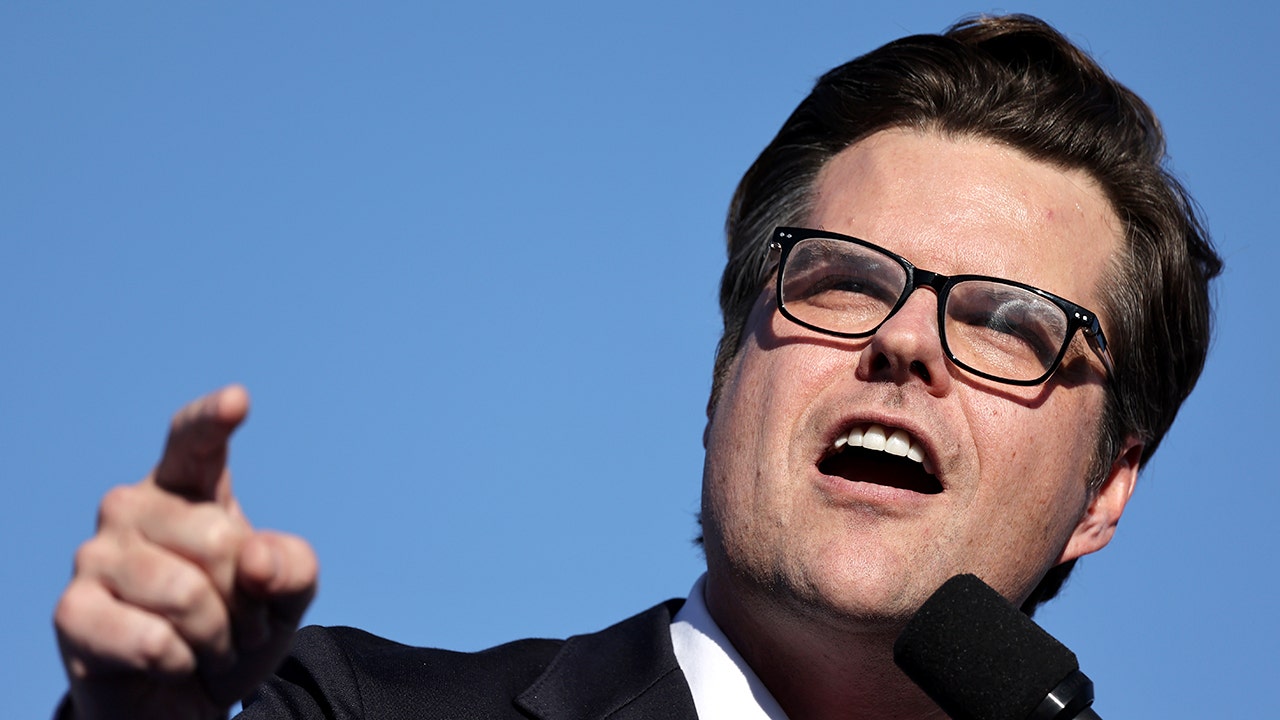
 News6 days ago
News6 days agoGaetz-gate: Navigating the President-elect's most baffling Cabinet pick

